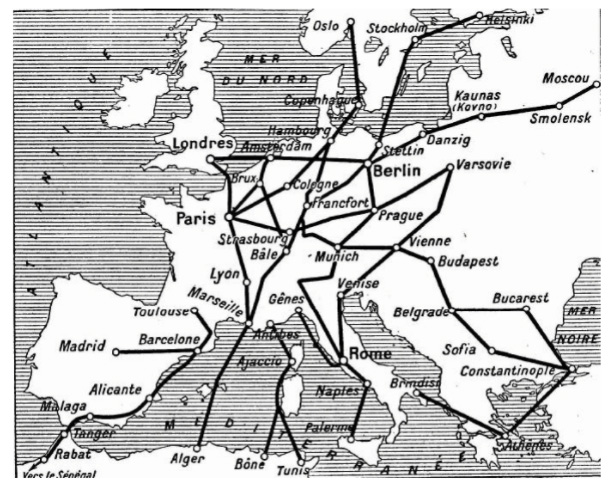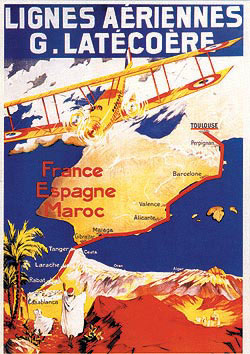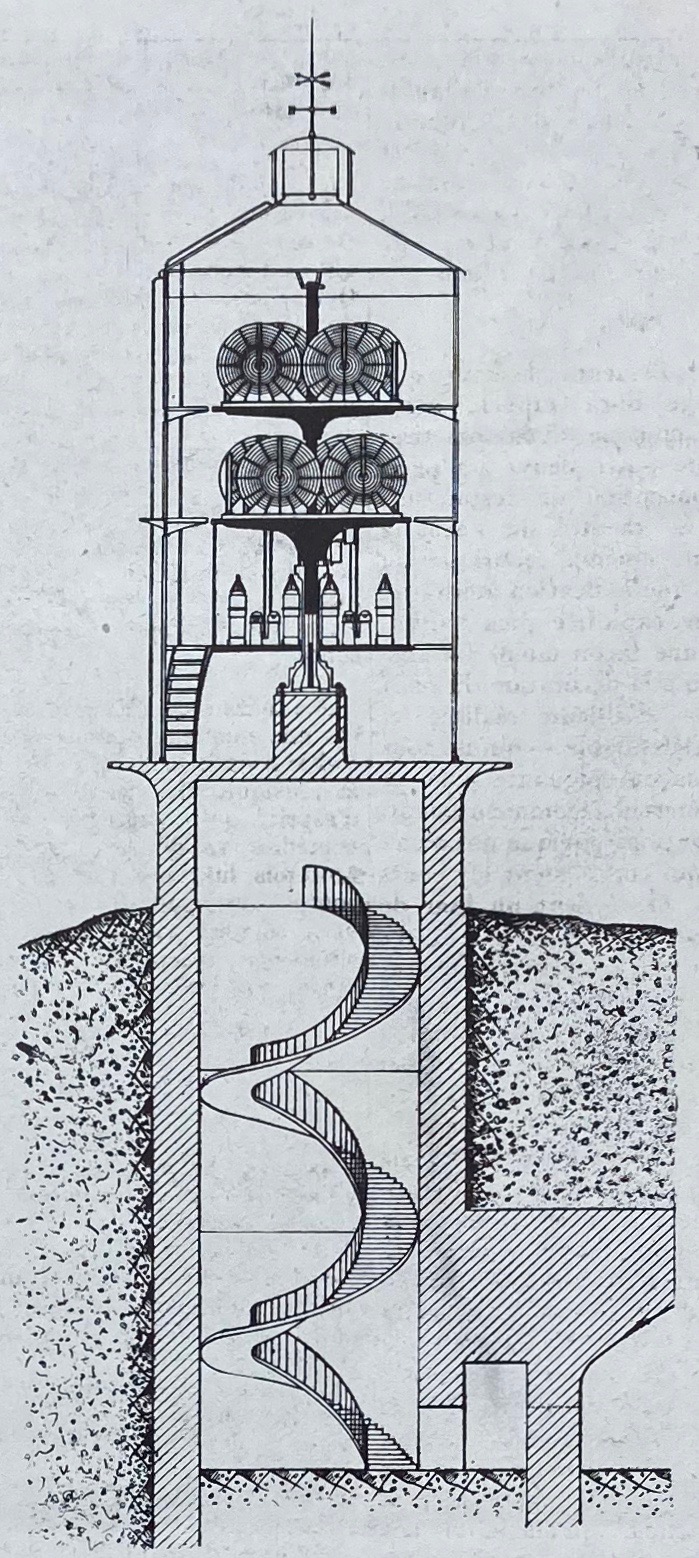Pierre-Georges Latécoère decides to create airlines to transport mail: L’AEROPOSTALE
His network quickly extended beyond metropolitan France to Spain, Morocco, Senegal and across the South Atlantic to Rio and Buenos Aires.The first Farman line with F.60 Goliaths which, in 1919, linked Paris – Le Bourget to London – Croydon in 7 hours, round trip, is a distant memory.
Aeronautics in 1935 was in permanent expansion. After the excitement of the First World War, many pilots returned to civilian life.
Airline companies flourished and quickly covered destinations throughout Europe.
Pierre-Georges Latécoère decides to create airlines to transport mail: L’AEROPOSTALE
His network quickly extended beyond metropolitan France to Spain, Morocco, Senegal and across the South Atlantic to Rio and Buenos Aires.


Aircraft fly day and night following a network of aeronautical lighthouses staked out along the air routes.
France, Germany and several other European countries are equipped with these systems.
The lighthouses are elevated on metal or concrete pylons and have high-powered white acetylene lights with ranges of 25 to 40 km. They are often replaced by neon tubes emitting a red-orange light that is more visible in bad weather.
France decided to build several long-range lighthouses requiring larger infrastructures. Their range was increased to 80 km and they marked out specific areas such as the Perthuis pass for the crossing of the Pyrenees.
Even larger buildings were erected, such as the two lighthouses on Mont Valérien near Paris, which had a range of 150 km, or even the ultimate lighthouse on Mont Afrique near Dijon, which was 30 meters high and had 8 powerful flashing lights that could be seen from 400 km away on a clear night.

The radio of the time was rudimentary and often reduced by the weather, the terrain and the noise in the planes.
It was also necessary to deploy long antennas behind the aircraft.
Even if it was possible to communicate orally, messages were often sent in Morse code and using the Q code.
1935 was a turning point in aeronautics as the direction finder and ground beacons began to be tested to improve the safety of aircraft… we will stop here before technology altered too much the way the pioneers of the 30’s flew.
